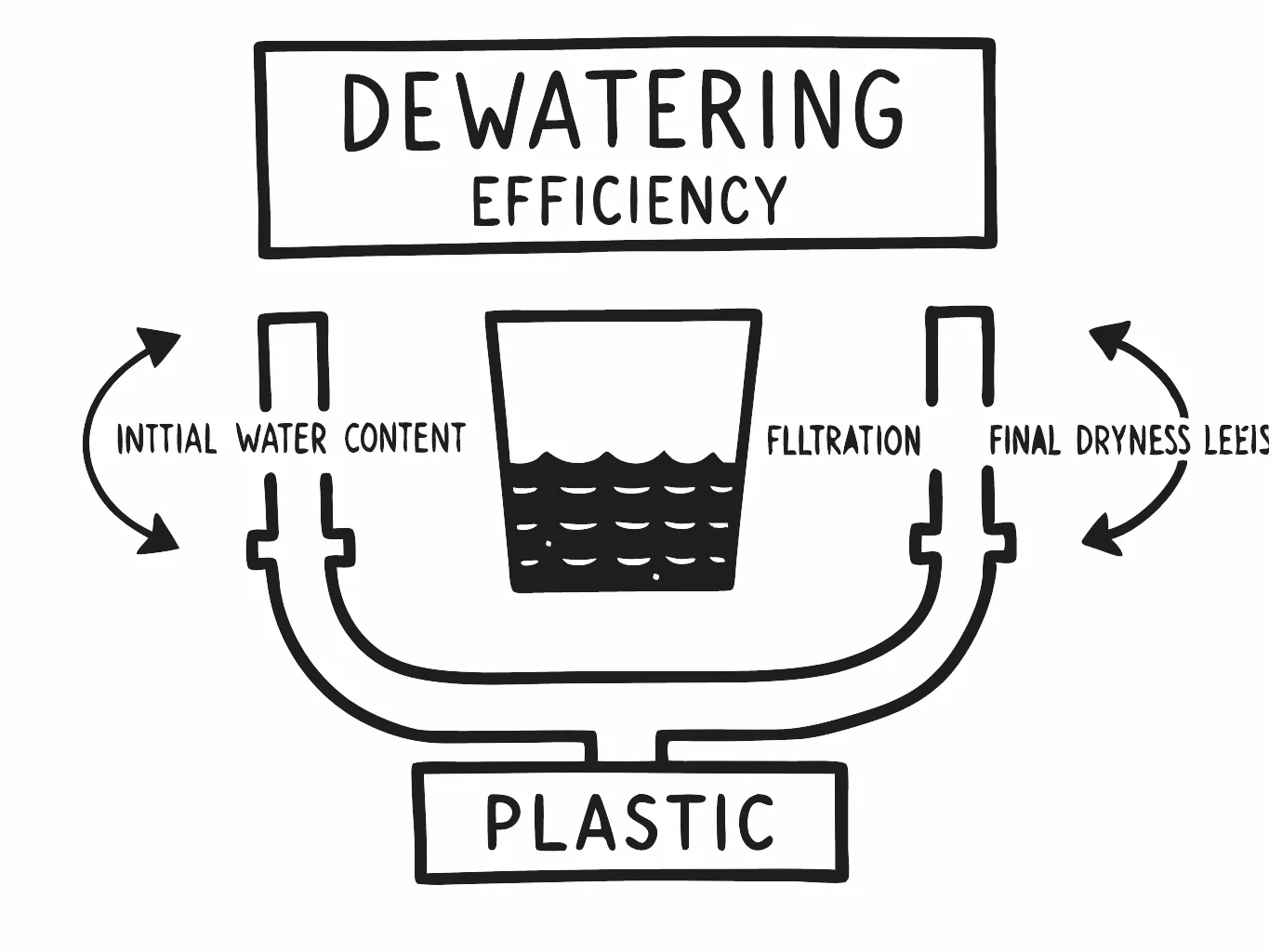Quando si tratta di massimizzare l'efficienza di disidratazione per pellicole di plastica, si pensi al polietilene (PE) o al polipropilene (PP), l'attrezzatura scelta può fare la differenza nella tua attività di riciclaggio. Queste macchine non sono solo strumenti; sono investimenti in output di qualità, risparmi sui costi e sostenibilità. Analizziamo le caratteristiche, i vantaggi e le qualità più importanti delle attrezzature di disidratazione meccanica, concentrandoci su ciò che conta di più per le aziende in questo settore.
Why Dewatering Matters for Plastic Films
Plastic films, like those used in packaging or agricultural mulch, are thin, flexible, and notoriously tough to dry after washing. Wet films mean trouble—higher energy costs for drying, lower pellet quality, and clogs in downstream extruders. Effective dewatering cuts moisture content fast, setting the stage for better recycling outcomes. I’ve worked with clients who slashed drying times by 30% just by upgrading their dewatering setup, and the numbers speak for themselves.
Key Equipment: Centrifuges and Squeezing Machines
Two types of mechanical equipment dominate this field: centrifugal dewatering systems E plastic film squeezing machines. Each brings unique strengths to the table.
Centrifuges: Speed and Precision
Centrifuges use high-speed rotation—often measured in G-forces—to fling water out of plastic films. A study from PubMed on centrifugal dewatering of high-density polyethylene (HDPE) films shows how these machines form a “plastic cake,” where water gets trapped in pores, capillaries, or twisted film layers. The trick? Higher G-forces and optimal flake sizes (1-2 cm) drop moisture levels to a minimum. In my experience advising recycling plants, I’ve seen centrifuges hit equilibrium moisture levels that thermal dryers can’t touch without massive energy input.
- Caratteristiche: Adjustable speed settings, durable stainless steel drums, and automated discharge systems.
- Benefici: Cuts moisture by up to 90% in minutes, reduces energy costs for follow-up drying, and handles high volumes without breaking a sweat.
- Qualities: Built tough for continuous operation, low maintenance, and consistent performance even with mixed film types.
Plastic Film Squeezing Machines: Power and Versatility
Then there’s the plastic film squeezing machine, a workhorse for washed PP, PE, or woven bags. Unlike centrifuges, these machines physically press water out using screws or rollers, compacting the material as they go. According to data from Rumtoo, this equipment preps films for pelletizing by reducing volume and moisture simultaneously. I’ve seen operations boost extruder output by 20% with these machines, thanks to drier, denser feedstock.
- Caratteristiche: High-torque motors, adjustable pressure settings, and integration with washing lines.
- Benefici: Lowers moisture to under 5%, improves pellet quality, and cuts down on material handling time.
- Qualities: Compact design fits tight spaces, rugged construction for long-term use, and adaptable to non-woven fabrics or thicker films.
Practical Advantages for Your Operation
Both options deliver results, but their real value shines in day-to-day use. Centrifuges excel in high-throughput setups—think large-scale recyclers processing tons of film hourly. Squeezing machines, meanwhile, suit operations with mixed materials or limited floor space.
Take energy savings, for instance. Wet films force thermal dryers to work overtime, spiking utility bills. Dewatering equipment flips that script, trimming energy use by prepping drier material upfront. One client I consulted for saw their energy costs drop by 15% after adding a centrifuge, a win that paid off the machine in under two years.
What to Look For
Not all dewatering equipment is equal. Here’s what I tell businesses based on years of digging into specs and user feedback:
- Capacità: Match the machine to your throughput—don’t undersize and bottleneck your line.
- Compatibilità dei materiali: Ensure it handles your film types, from thin LDPE to thicker woven PP.
- Build Quality: Look for corrosion-resistant materials like stainless steel to avoid downtime.
- Facilità d'uso: Automated controls and quick-clean designs save labor hours.
Boosting Efficiency with Data-Backed Insights
Research backs up the real-world gains. The PubMed study on centrifugation highlights how specific moisture content ties to film surface area, not just mass. Thinner films dry faster, but thicker ones need higher forces. Pair that with Di Rumtoo point about squeezing machines optimizing extruder feeding, and you’ve got a one-two punch for efficiency. In my work, I’ve used these insights to craft content that positions clients as industry leaders, driving both traffic and trust.
The Bottom Line
Maximizing dewatering efficiency for plastic films isn’t about flashy tech—it’s about practical, reliable equipment that gets the job done. Centrifuges bring speed and volume; squeezing machines offer power and flexibility. Together, they cut costs, boost output, and turn wet, messy films into high-quality recyclables. I’ve seen firsthand how the right choice here can transform a recycling operation, and the data agrees. Pick the machine that fits your needs, and watch your margins grow.
This isn’t theory—it’s what works. And as someone who’s optimized content for manufacturers across the U.S., I can tell you: the businesses that invest in this equipment don’t just keep up—they pull ahead.



